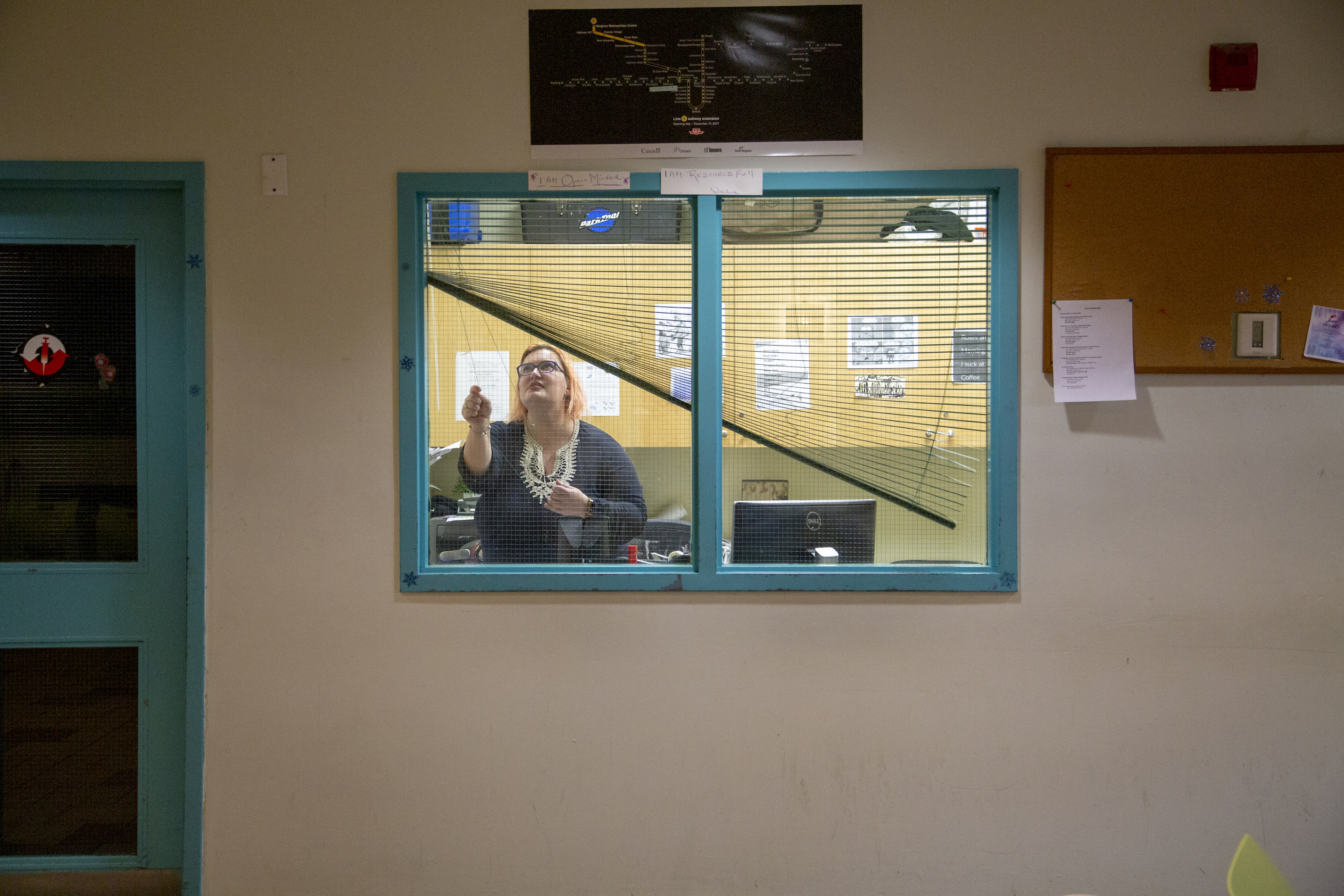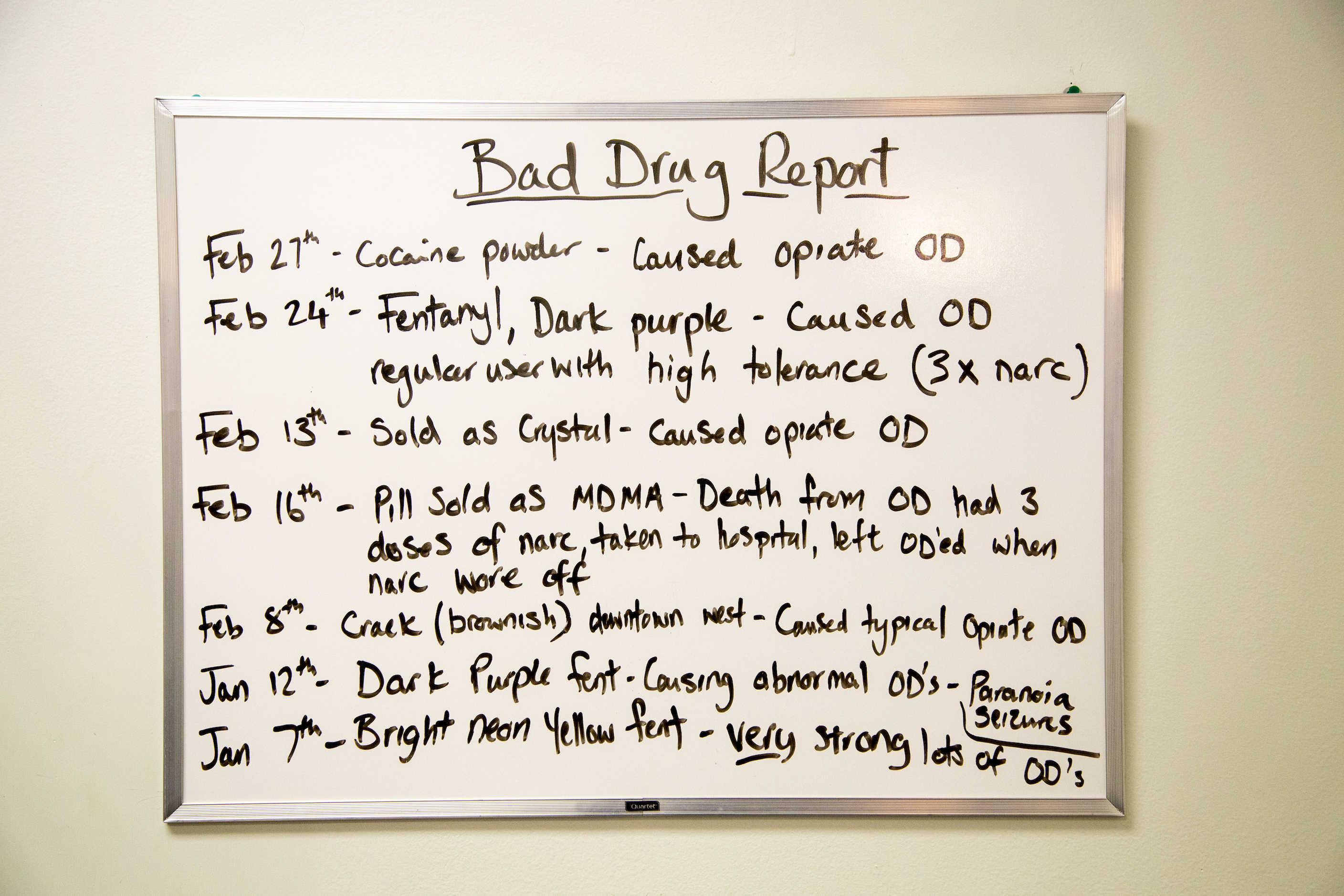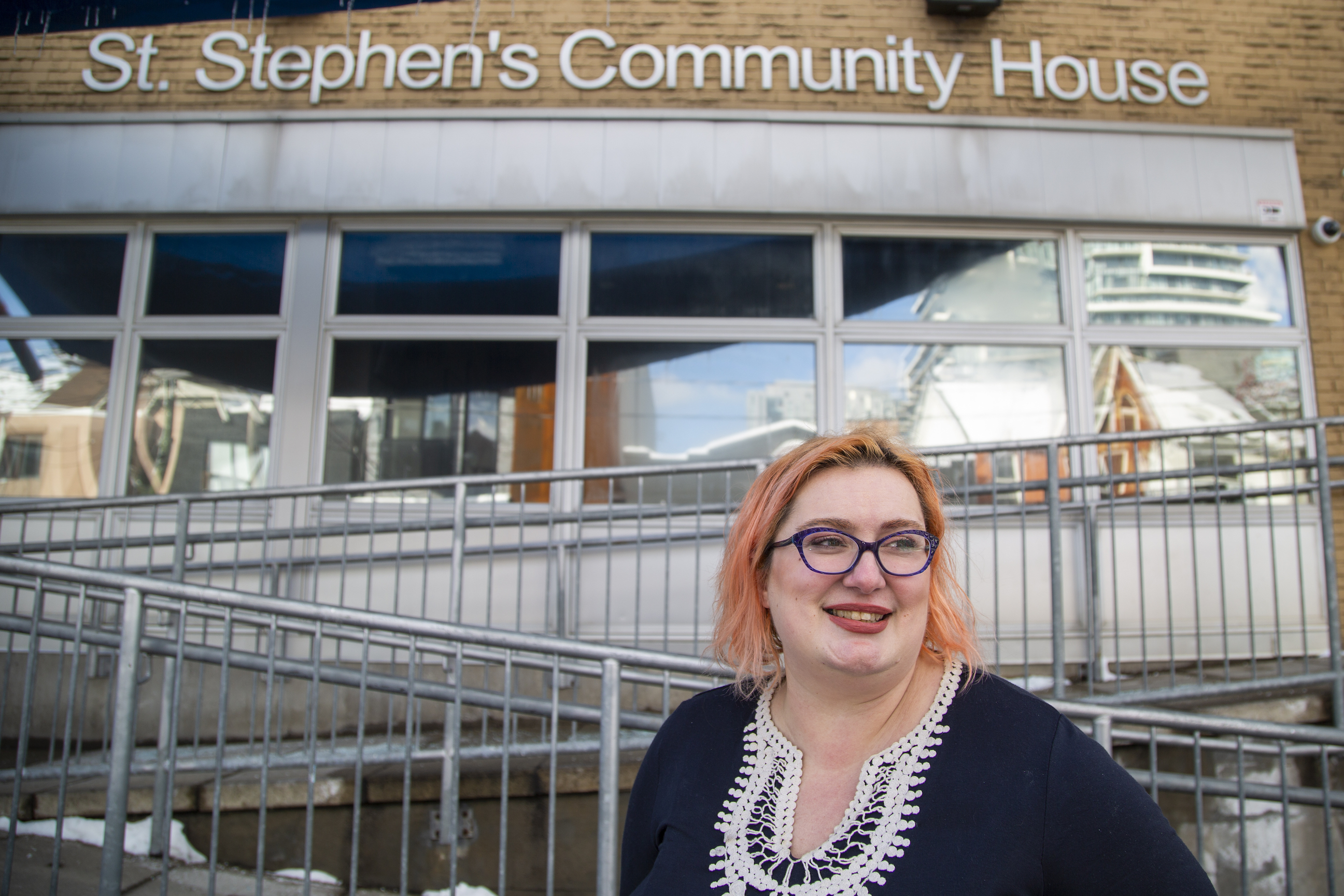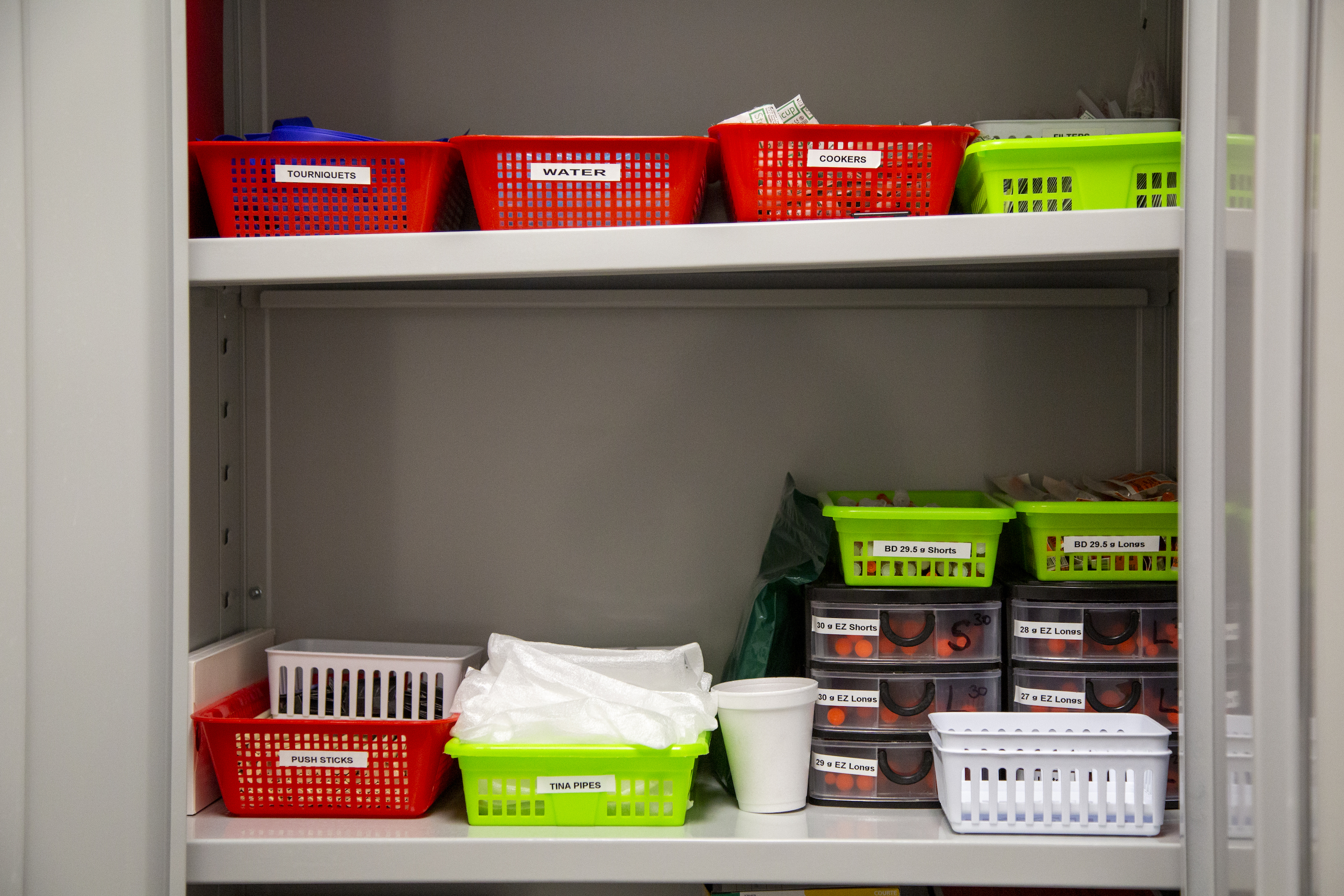Changing the Way We Think About Meth
Credit to Author: Rachel Browne| Date: Mon, 18 Mar 2019 17:05:27 +0000
Jordan Bond-Gorr is still figuring out how crystal meth fits into his life.
“I derive pleasure when I use it,” Bond-Gorr, who’s 38 and lives in Toronto, told VICE. “There’s a freedom it gives me, letting go and pushing limits, and exploring things I couldn’t explore.”
But it took him years to get to the point where he’s comfortable speaking about his drug use in public.
As a queer man, Bond-Gorr says he has long struggled with self-esteem and internalized homophobia. So he was always drawn to stimulants like cocaine and ecstacy, substances that pull him out of his shell and give him confidence.
The first time he encountered crystal meth was at a bathhouse in Toronto, more than a decade ago when he was around 26. He didn’t like it. The second time, however, changed everything.
“It was the perfect match,” said Bond-Gorr. “I loved it. I don’t know how else to describe it. It scratched an itch I didn’t know I had.”
Within a few years, he became an injection user with an intense daily addiction that cost him family, friends, his health, and compromised his job. He wanted to get sober. So he tried rehab, detox, the 12-steps, and therapy. It worked for a few years, but he missed the way meth made him feel.
“There was nowhere where it was OK to be where I was in life, accepted,” said Bond-Gorr.
He started using again.
Last year, he was paired with a subsidized housing worker in Toronto who suggested he attend a drop-in program at St. Stephen’s Community House in Kensington Market specifically for people who use crystal meth.
Instead of insisting on abstinence—that participants go drug-free—the program adheres to the values of harm reduction: accepting and supporting people who consume drugs wherever they’re at in life, and provide them with tools to use in a safer way. It doesn’t matter if they continue using.
“I had never heard of a harm reduction group for people who use meth, ever,” Bond-Gorr explained. Most rehabs or traditional recovery programs he had tried required complete abstinence and saw that as the ultimate goal—and he was often told that meth equals death.
The program is one of a number of recent harm reduction initiatives around Toronto specifically dedicated to meth as a response to reports of rising meth use—and meth-related harms—especially among youth in their late teens and early 20s. This includes the Crystal Meth Project at St. Stephen’s, innovative medical treatments, a bicycle workshop, and education efforts within LGBTQ+ communities.
“I was always told by several professionals that you can’t ‘harm reduce’ with crystal meth. That it’s just impossible.”

He pointed to the deeply entrenched stereotypes of meth users that permeate popular culture.
“People tend to think that people who use crystal meth are all aggressive, violent, out of control, tweakers. That image that we have in popular culture of the toothless person scratching at themselves, that is not true for everyone,” he said.
“And I think it’s important there are those of us out there who start talking about it and owning the lived experience, because I really feel around all issues with substance, it is a culture of secrecy and shame that keeps us unsafe.”
Bond-Gorr now describes his meth use as “maintenance,” which he says means “I’m really not using to get fucked up. I’m using it to make me feel ordinary. And I don’t use every day because I work, and my job is very important to me.” He’ll still use for fun on weekends, but in general, he’s trying to taper his use.
Last summer, he became a paid peer worker to help others who use drugs connect with social services, including those offered through St. Stephen’s. The peer worker model is championed at St. Stephen’s and other harm reduction groups.
“I’m still an active substance user,” Bond-Gorr said. “So understanding that world, at least to a degree, can be very powerful for people to feel like they can connect and trust.”
“Am I concerned about crystal meth? It’s hard for me to answer that question because I am concerned about people. I’m concerned about people who are using crystal meth who are not getting any support. And they’re not getting what they need.”
Crystal Meth Project
St. Stephen’s launched the Crystal Meth Project as a pilot program in December of last year.
“Focusing on crystal meth is the revolutionary part of it,” Casey Schapel, the project’s coordinator, told VICE. The program is capped at 20 participants and case management is tailored to the needs of people who are street-involved whose substance of choice is meth. Participants are linked with social services, basic harm reduction supplies—sterile syringes, pipes, etc.—and also food, companionship, and a place to take a quick rest.
The program came about after staff saw an increase in people reporting crystal meth use, and complications stemming from it, Schapel said. He explained that crystal is the most potent form of meth, versus speed, which is less pure, or other forms of the drug.
Sanda Kazazic, coordinator of drop-in services at St. Stephen’s, added that she and her colleagues have seen an increase in crystal meth use over the last couple of years, as well as an increase in the general harms that can come from prolonged use of the drug such as skin infections from injecting and mental health concerns.
She said the problem is that people, particularly healthcare workers, law enforcement, government officials, may not know that someone is on meth, and may misjudge or label them as inherently violent or criminal.
“Or they [the person using] might experience psychosis, which other people can experience on the outside as a scary thing. There’s also fear of the person,” Kazazic explained. As a result, they may get excluded from accessing social services such as shelter spaces or housing.

The challenges and barriers experienced by people who use meth are often different from those who use opioids, including when it comes to overdoses.
“There’s no naloxone for it. The person is not out of it. They don’t appear dead, it’s actually the extreme. It can look like a heart attack,” Schapel explained. “You need to have knowledge in order to have the capacity to address it in the moment. If it’s happening in the public, or even in the hospital, there needs to be education around it so that people know how to handle it.”
It’s also more likely the case that someone overdosing, or behaving in an extreme way, on crystal meth will face criminal justice repercussions rather than healthcare, he explained.
“I think the harm reduction approach for someone who is overdosing on opioids or alcohol, they are taken to hospital,” Schapel said. “But when you’re overdosing on crystal meth, you’re so high-functioning that it’s perceived as a criminal behavioural or criminal justice challenge. So then your interaction is more so with the criminal justice system as opposed to the healthcare system.”
All of these factors have prompted harm reduction workers like Kazazic and Schapel to take different approaches when it comes to people who use meth, compared to other substances like opioids.
“The key is to be patient, to be flexible, to create a safe space for that person,” Kazazic explained, adding that addressing human needs are also types of harm reduction.
“The basics of sleep, hydration, food. Sleep is such a huge important harm reduction measure,” said Schapel, especially if someone has been using meth and up for days at a time. “And it doesn’t help having a housing crisis.”
Meth and Bikes
Kazazic and Schapel also pointed to the value of activities and having things to do as a form of harm reduction. Every week, there’s an informal bicycle workshop, something that came together in an impromptu way last summer. It’s been a simple but effective tool to help participants feel engaged and have a sense of purpose—things that are often undervalued.
“One of the things that we noticed, and I have zero scientific explanations for it, but I did notice that folks who use crystal and who are street involved … have this genuine fascination with bicycles,” said Kazazic. “People who self-identify as crystal meth users would spend hours and hours working on bikes outside. Working on their own, working on each other’s, sharing tools, putting artwork on them, painting the wheels.”
“One thing that people talk about is a lack of meaningful activity. And crystal meth, being a stimulant, having something tangible to do with your hands that’s productive and meaningful to the individual,” added Schapel.

For Dr. Tomislav Svoboda, a physician who provides medical care at St. Stephen’s, the bicycle workshop exemplifies one of the most important aspects of health.
“The World Health Organization’s definition of health includes the ability to achieve our goals and aspirations. And we frequently forget about that,” Svoboda told VICE. “Fixing a bike for themselves, for others, rehabilitating a bike … it’s engaging the creative parts of ourselves and the parts of ourselves that look for purpose and meaning.”
“That kind of approach is really missing in our community. It’s really something we’re lacking,” he continued.
Dextroamphetamine
In addition, Svoboda said there are pharmacological treatments that may be helpful for people who are looking to reduce their crystal meth use or cease it altogether.
However there’s a lack of pharmacological substitution treatments for crystal meth, like there are for people addicted to opioids who can curb their cravings and withdrawal symptoms with suboxone or methadone.
But Svoboda, who used to work in a managed alcohol program, said he has been prescribing around six patients who are addicted to crystal meth with a pharmaceutical drug called dextroamphetamine, a strong stimulant typically used to treat ADHD. He only knows of a couple other doctors in the area who also carry out this type of prescription practice.
While studies in the US have not found that most crystal meth users who were given dextroamphetamine used less crystal meth, they did find that they were likely to continue engaging with treatment.
Even though it’s a somewhat controversial method that Svoboda says many of his physician colleagues may not support, because it’s not technically meant as a meth substitution treatment, he has seen some marginal success.
“When you work with this group for awhile, you start grasping for straws,” he said. “You start looking for anything that works. This straw does seem to have some potential and works for some people.”
While his dextroamphetamine patients have reported reducing their crystal meth use, it’s a very small number.
“I still feel like it’s a useful tool,” Svoboda said.
He has seen what he describes as dramatic improvements among his patients, including a reduction in emergency room visits and more time in shelters.

Breaking the stigma
Jordan Bond-Gorr is considering starting dextroamphetamine with Dr. Svoboda soon. But he’s standing at a crossroads.
“I’m eager to see meth and other drugs in the rightful place in my life, which is the occasional indulgence, not a daily routine,” Bond-Gorr said. “I’m an injection drug user, so there are some harms if you’re using it too often, but I also don’t want to say I’m cutting it out cold turkey because I still enjoy it from time to time.”
He also says that while most of the media and public policy discussions have focused on opioids, he’s hopeful that meth and other drugs will start being considered.
“The opioid crisis has brought into our consciousness that the current way that we deal with substances is not working because people are dying. There’s been more talk of decriminalization, there’s been more talk about making certain substances legal since the opioid crisis has begun,” he said. “Even though in the short-term we’re not really having conversations about other drugs, my hope is that we will not lose sight that this is actually a bigger conversation about all substances”
In the meantime, he will continue pushing back against the stigma.
Follow Rachel on Twitter